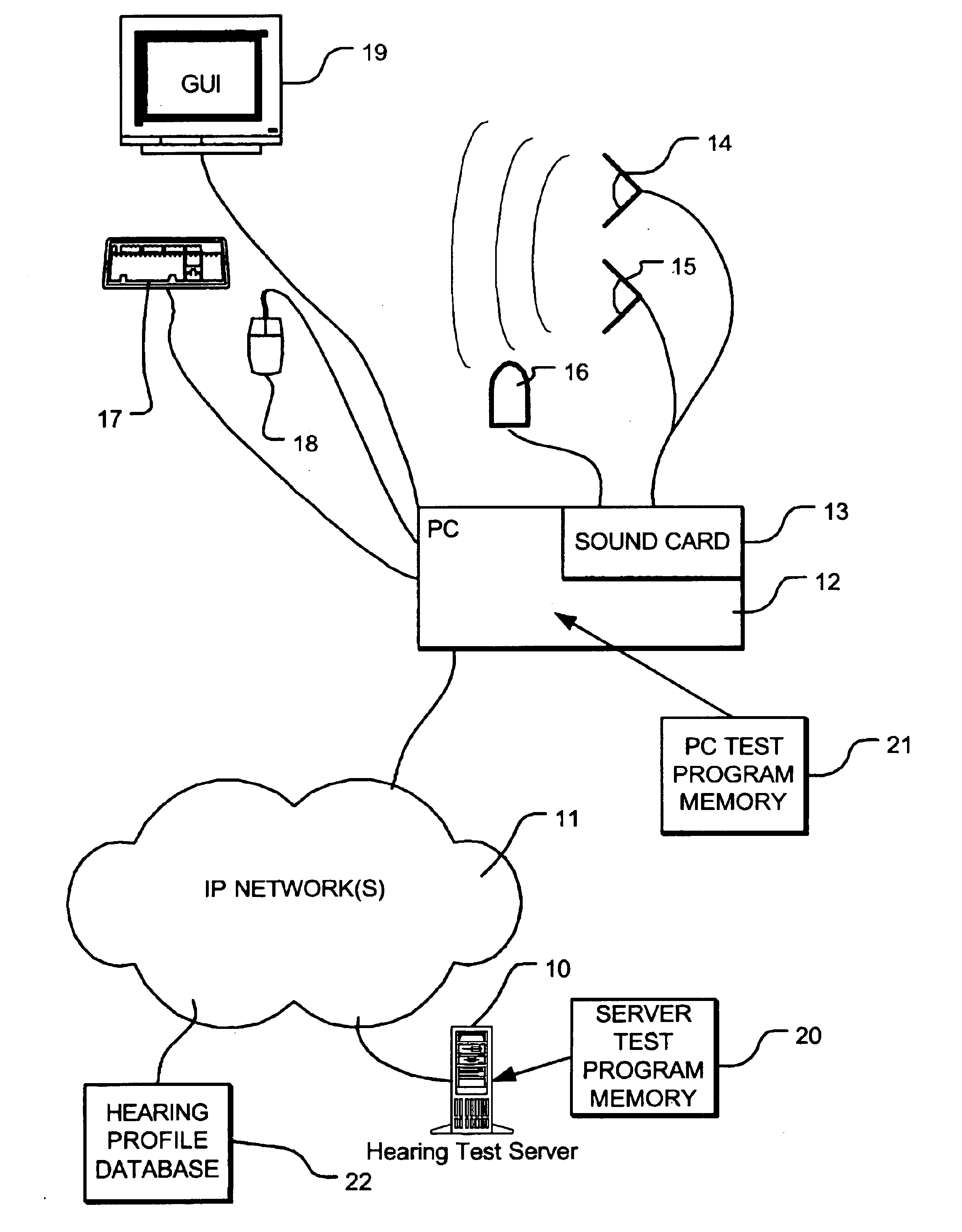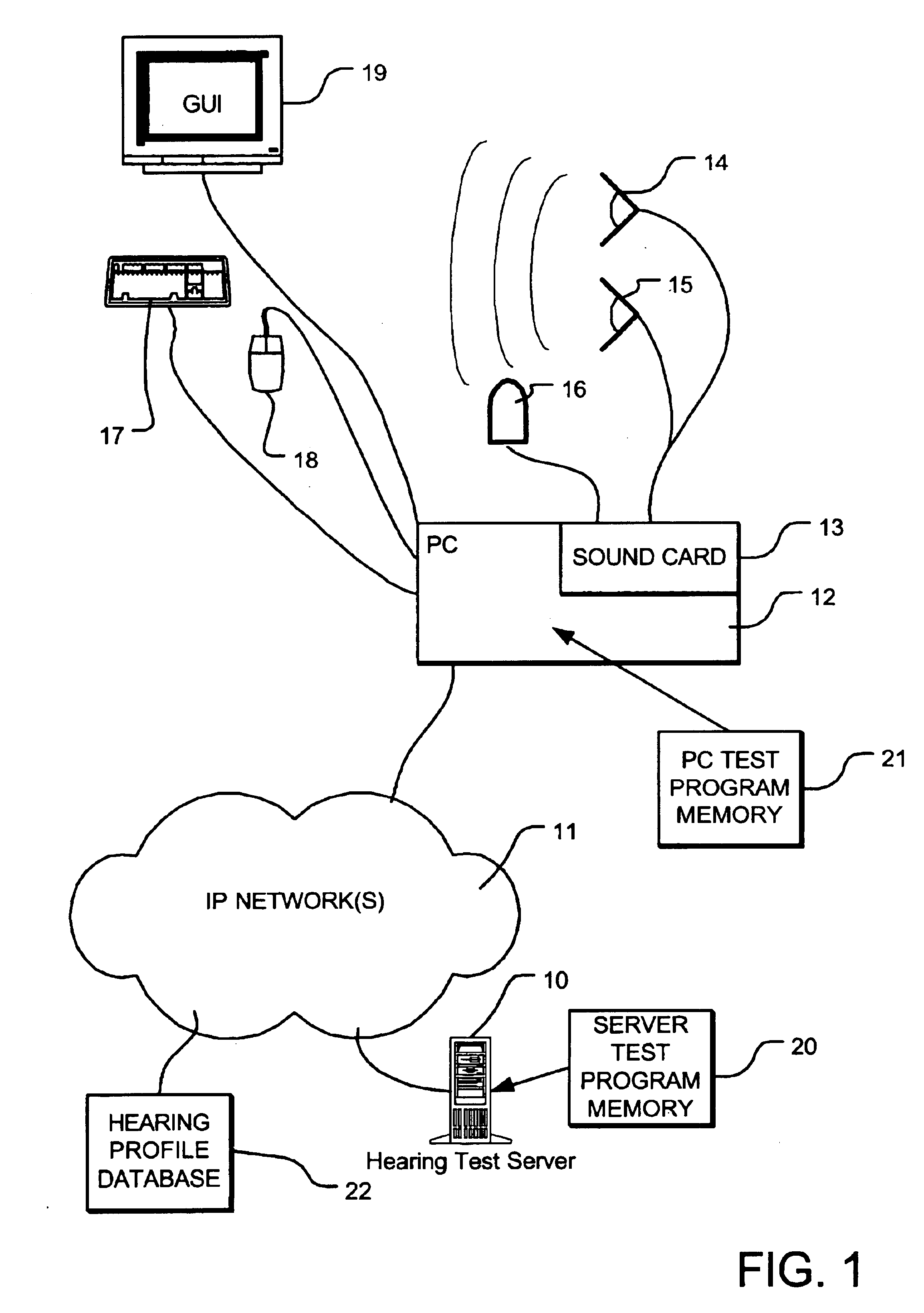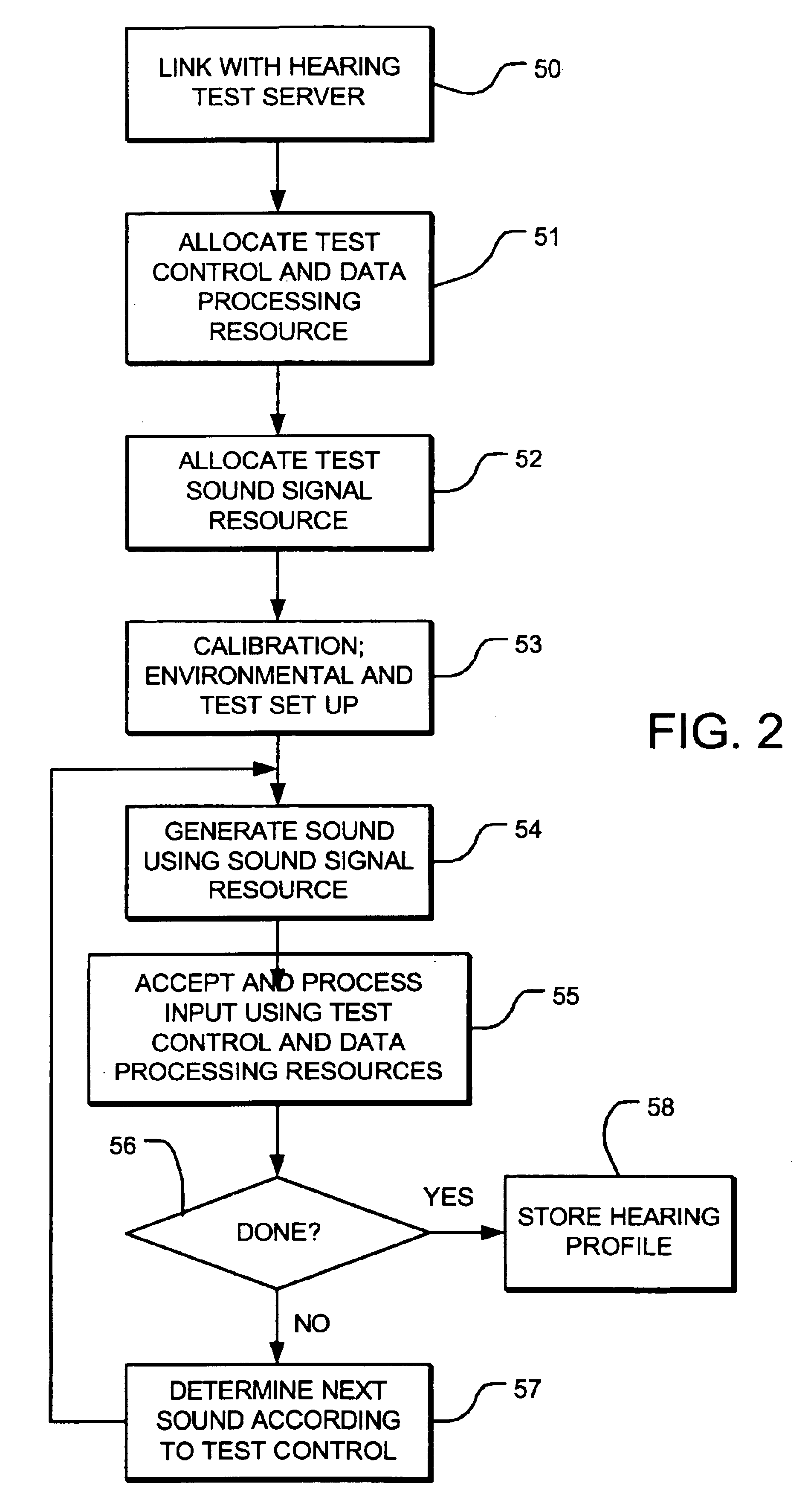System and method for remotely administered, interactive hearing tests
a technology for interactive hearing tests and hearing tests, applied in the field of methods and systems for remotely administering hearing tests, can solve the problems of many people, processing is not in position to use hearing aids, and the technique is unavailable to persons not using hearing aids
- Summary
- Abstract
- Description
- Claims
- Application Information
AI Technical Summary
Benefits of technology
Problems solved by technology
Method used
Image
Examples
Embodiment Construction
A detailed description of the various embodiments of the present invention is provided with reference to FIGS. 1-24.
FIG. 1 illustrates the Internet based system of the present invention implementing a hearing assessment test. System includes a hearing test server 10 coupled to a communication network 11, such as the Internet. The hearing test server 10 executes an interactive, converging hearing test protocol, such as the N-Alternative Forced Choice with a staircase convergence process described herein. A user end station 12, such as a personal computer, is also coupled to the communication network 11. The end station 12 includes a sound card 13 which provides data processing resources for producing audio output and receiving audio input under control of the logic in computer programs executed by the processor in the end station 12. In the figure, the sound card 13 is connected to stereo speakers 14 and 15, or to a headphone, and to a microphone 16. However, a wide variety of config...
PUM
 Login to View More
Login to View More Abstract
Description
Claims
Application Information
 Login to View More
Login to View More - R&D
- Intellectual Property
- Life Sciences
- Materials
- Tech Scout
- Unparalleled Data Quality
- Higher Quality Content
- 60% Fewer Hallucinations
Browse by: Latest US Patents, China's latest patents, Technical Efficacy Thesaurus, Application Domain, Technology Topic, Popular Technical Reports.
© 2025 PatSnap. All rights reserved.Legal|Privacy policy|Modern Slavery Act Transparency Statement|Sitemap|About US| Contact US: help@patsnap.com



